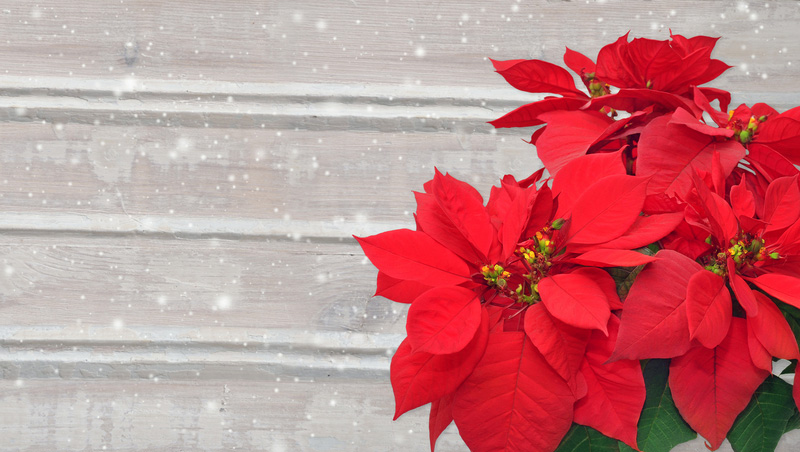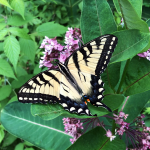The poinsettia plant, a longtime Christmas favorite in America, is native to Central America and was introduced to the United States in 1825 by Joel Robert Poinsett, the first U.S. ambassador to Mexico. Poinsett took wild plants from southern Mexico and sent them back to the United States to be cultivated in greenhouses. Poinsettia care was fairly easy, so the plants became popular at Christmas time due to their festive red and white colors.
Poinsettias need not disappear after the holiday season. These plants can be kept alive and healthy year-round with just a bit of special care. If you want to go the extra mile, you can take a few extra steps to ensure your plant flowers again in time for the next Christmas. Read on to get our best poinsettia care tips!
Poinsettia Care Tips
Temperature
The ideal inside temperature to keep poinsettias healthy is between 65 and 70 degrees F during the day and around 60 degrees F at night. If possible, move the plant to a cooler spot when you go to bed. Avoid exposing the plant to temperature below 55° or to hot or cold drafts, which may cause premature leaf drop.
Light
Place poinsettias in natural light near a sunny window in the winter, leaving some space between the leaves and the cold window pane.
Water
Water only when the soil is dry to the touch. Do not let the pot sit in a saucer of water. Overly wet soil prohibits sufficient air circulation, which is necessary for the plant to thrive.
Poinsettia Care Troubleshooting
Wilting
If poinsettias are kept in an area with too much light and not enough humidity, they will begin to drop leaves, wither, or both. Often, people discard the plant at this time, mistaking it for being dead. If you notice these symptoms, water immediately with room temperature water, checking every ten minutes or so and re-watering as needed until the soil remains moist to the touch. After a few hours, the plant should begin to re-hydrate and spring back to health, although it will take time for new leaves to appear.
Re-flowering
Optimal poinsettia care can coax old plants into re-flowering for future Christmases. To force a poinsettia to re-flower, continue normal watering of the soil until the first of April, then allow it to dry out gradually — but don’t let the stems shrivel up. This will lull the plant into its dormant phase. Store the poinsettia in a cool (60 degrees F), airy location on its side or upright. In mid May, cut the stems back to about 4 inches above the soil, and re-pot in a slightly larger pot with a clean, fresh soil mixture. Water the soil thoroughly after potting, then wait ten minutes and water again before putting the plant near a sunny window. Maintain a temperature of 65 to 75 degrees F, and water when the surface of the soil is dry to the touch. After new growth appears, it is okay to fertilize, if desired.
Move the plant outside to a shady location once the danger of a frost has passed. Continue watering and fertilizing the poinsettia while it is outdoors. Pinch stems (remove 1 inch of terminal growth) as needed in order to prevent the plant from growing tall and leggy. In October and November, cover the plant so that it is in complete darkness at night (from 5 p.m. and 8 a.m.), re-placing it near a sunny window in the daytime. New flowers should appear just in time for the holidays.
Do you know any other poinsettia care tips? Let us know in the comments!
This post was first published in 2015 and has been updated.






I keep mine in sunny window until after frost, then plant outside. They continue to grow into a wonderful lush green plant all summer long.
Grew mine in shady place in the summer, took in when frost was coming and snipped the branches to 4″ tall. It is Dec now and it has many new leaves coming. In 1919 I’ll try to rebloom it for Christmas
Think you mean the year 2019….Not 1919
Okay professor